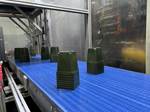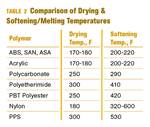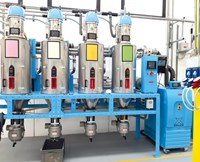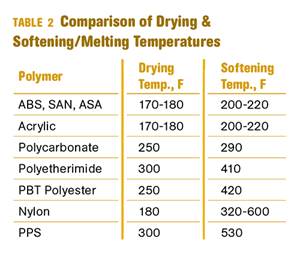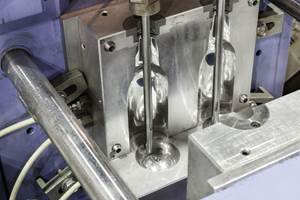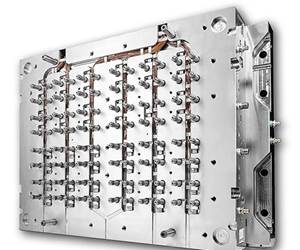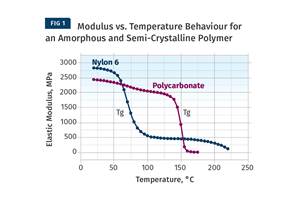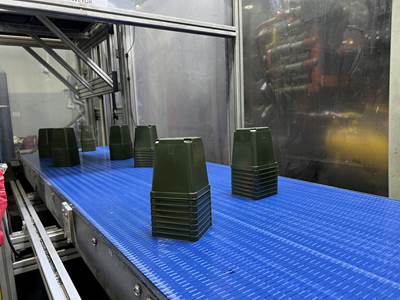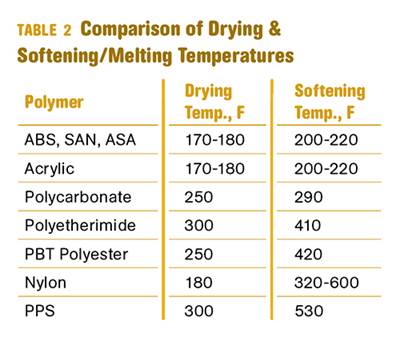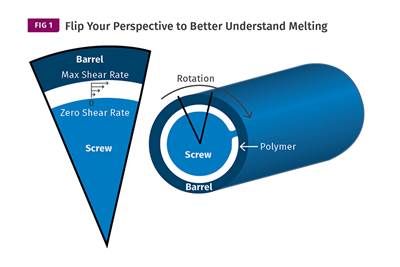EXTRUSION: Better Mix In Means Better Mix Out
Segregation or de-mixing of polymers and additives can be a big problem in single-screw extrusion. Here’s why it happens, and how to fix it.
There is a mixing principle in single-screw extrusion that always holds true: The better the mix entering the screw the better the final mix. Providing a better mix into the screw requires two things: A mixing procedure that first uniformly disperses the additives through the base polymer(s) and secondly prevents them from segregating before—or even as—the mix enters the screw.
The second requirement is particularly true of certain solids that cannot be sheared to take advantage of the dispersive-mixing effect that single screws provide. These include various mineral or metallic fillers that typically cannot be sheared into the base polymer because they do not melt or soften and tend to pass through the extruder with no changes in shape or size. Significant axial redistributive mixing of such materials is difficult to achieve on single screws because these extruders are surprisingly plug-like in flow, meaning the flow is very much “first in-first out.” This is related to the laminar flow of polymers in the single screw, and the predominant down-channel shear distribution in the channel, which results in restricted mixing in the axial direction.
Single screws also lack a significant mechanism for reorientation of the laminar interfaces formed, which greatly reduces the ability to perform “macro” mixing. Only high levels of pressure flow or head pressure result in significant axial mixing, but that also reduces output and raises melt temperature.
There is of course aggressive localized mixing in the screw channels, particularly as melting progresses and—to a lesser degree—after melting is complete. However, that does not provide the large-scale redistributive effect that many expect to happen in the screw. Processors are usually disappointed when they realize their screw will not mix various solid materials satisfactorily, and they usually believe the screw design(er) is at fault. Various screw geometries and mixer designs can divide numerous times and apply shear to the polymer/solid mixture, but are limited in large-scale redistribution.
It’s surprising to me how many processors haphazardly add solid additives to their extruder and expect it to somehow correct the distribution of these materials for a perfect mix at the discharge. The solids-feeding area of the extruder extends from well before the hopper to several flights down the screw, where the polymer and solids become compacted into a solid mass and movement is eliminated. Any time there is movement of the polymer-additive mix by rolling, sliding, vibrating, or flowing, there is the likelihood of de-mixing or separation (see illustration).
Particles that are flowing can separate based on differences in particle size, shape, frictional characteristics, surface roughness, and density. Separation can even happen at what would be considered relatively static locations, like a hopper. As a bench test to see if separation is likely, you can take the preferred mix, put it in a can, and shake it for a few minutes. When poured out evaluate how much the mix has segregated.
Segregation or de-mixing can occur at various points throughout the solids-transport system, so it’s usually best to perform the mixing of the solids with the base polymer(s) as close as possible to the screw flight entry to account for this possibility. Separation can be minimized in many cases by proper design of the piping and hoppers, and by altering particle characteristics.
For example, bulk-handling equipment can segregate the original mix based on velocities and velocity changes, which are governed by particle density, shape, and size. The shape of the hopper alone can cause segregation, with smaller particles tending to channel, depending on the slopes of the surfaces and angle of repose of the particle components. Smaller particles can even flow through the larger particles, causing separation, such as with fine powders.
Particles with much higher densities, such as metallic fillers, will segregate based on weight. Friction on the walls of the solids flow surfaces, such as the hopper walls, varies with the solid additive as well as surface roughness and frictional coefficient. Additionally, there is particle-to-particle friction that can cause segregation. Generally, the more different the filler particles are from the polymer pellets in any of these parameters, the more easily segregation can occur.
By varying the design, single screws can do a good to very good job of localized mixing of polymers and additives that can be melted or softened. But mixing additives that do not melt is more difficult, since they cannot take advantage of the naturally occurring shear-induced mixing from the screw rotation. “Better mix in-better mix out” particularly holds for those applications. You’ll avoid a lot of problems by keeping in mind that the initial mixing is not necessarily the mix that arrives in the screw.
ABOUT THE AUTHOR
Jim Frankland is a mechanical engineer who has been involved in all types of extrusion processing for more than 40 years. He is now president of Frankland Plastics Consulting, LLC. Contact jim.frankland@comcast.net or (724) 651-9196.
Related Content
Why (and What) You Need to Dry
Other than polyolefins, almost every other polymer exhibits some level of polarity and therefore can absorb a certain amount of moisture from the atmosphere. Here’s a look at some of these materials, and what needs to be done to dry them.
Read MoreThe Importance of Melt & Mold Temperature
Molders should realize how significantly process conditions can influence the final properties of the part.
Read MoreHow to Optimize Pack & Hold Times for Hot-Runner & Valve-Gated Molds
Applying a scientific method to what is typically a trial-and-error process. Part 2 of 2.
Read MoreThe Effects of Temperature
The polymers we work with follow the same principles as the body: the hotter the environment becomes, the less performance we can expect.
Read MoreRead Next
Processor Turns to AI to Help Keep Machines Humming
At captive processor McConkey, a new generation of artificial intelligence models, highlighted by ChatGPT, is helping it wade through the shortage of skilled labor and keep its production lines churning out good parts.
Read MoreWhy (and What) You Need to Dry
Other than polyolefins, almost every other polymer exhibits some level of polarity and therefore can absorb a certain amount of moisture from the atmosphere. Here’s a look at some of these materials, and what needs to be done to dry them.
Read MoreUnderstanding Melting in Single-Screw Extruders
You can better visualize the melting process by “flipping” the observation point so that the barrel appears to be turning clockwise around a stationary screw.
Read More.jpg;width=70;height=70;mode=crop)
